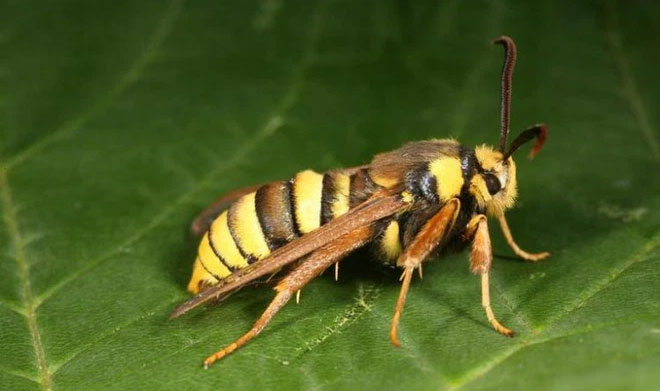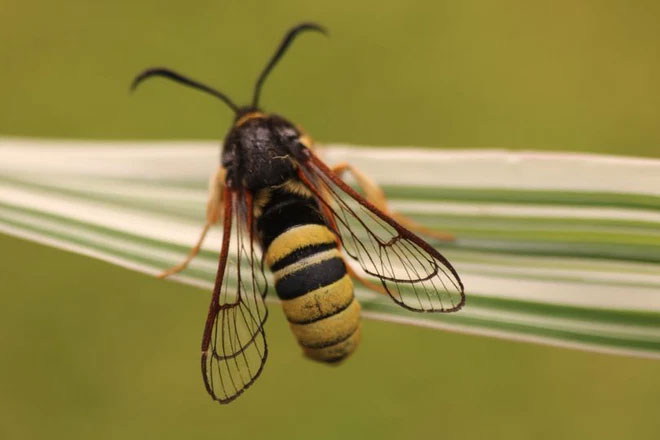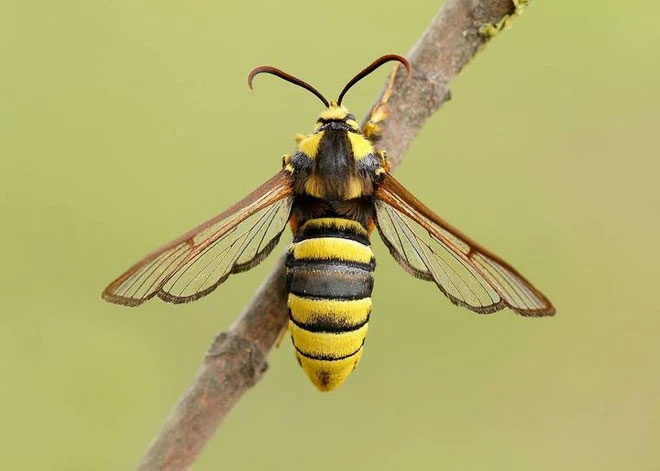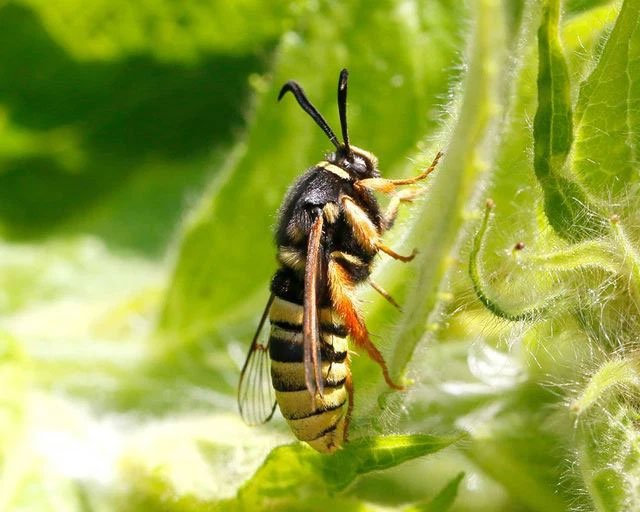This nocturnal moth is a classic example of Batesian mimicry, a form of mimicry in which a harmless species has evolved to resemble the appearance or behavior of another species to protect itself from predators.

In this case, the combination of yellow coloration, the shape of its abdomen, and its translucent wings effectively creates the illusion of a wasp. Only upon closer inspection do you notice that this insect lacks the stinger and teeth characteristic of wasps.

Despite the differences between the actual giant wasp and the wasp moth, distinguishing between the two species can be quite challenging, as the moth not only mimics the appearance of the wasp but also exhibits a similar flight pattern when disturbed.

Although it closely resembles a wasp, this moth is completely harmless to humans, and its mere appearance is enough to keep most people at a safe distance.

Sesia apiformis can be found throughout Europe, the United Kingdom, in some areas of the Middle East, and it has recently been introduced to North America. While harmless to humans, it is considered a secondary threat to poplar trees, especially in the UK, as they bore into the wood of these trees and lay their larvae inside.
|
Batesian Mimicry is a form of mimicry in biology named after the English naturalist Henry Walter Bates. In this type of mimicry, a non-toxic species disguises itself as a toxic one to avoid being preyed upon by predators. A classic example is the hoverfly, which mimics bees to deter birds from attacking them. Another example is certain moths that disguise themselves as unpalatable species, making birds reluctant to eat them. Batesian mimicry is the most common and thoroughly studied form of mimicry. The mimicry is not limited to appearance, color, and shape but can also extend to mimicry of smell, sound, behavior, and movement. For instance, there are moth species that, while harmless, mimic the ultrasonic sounds of unpalatable moths to prevent bats from preying on them. |
















































